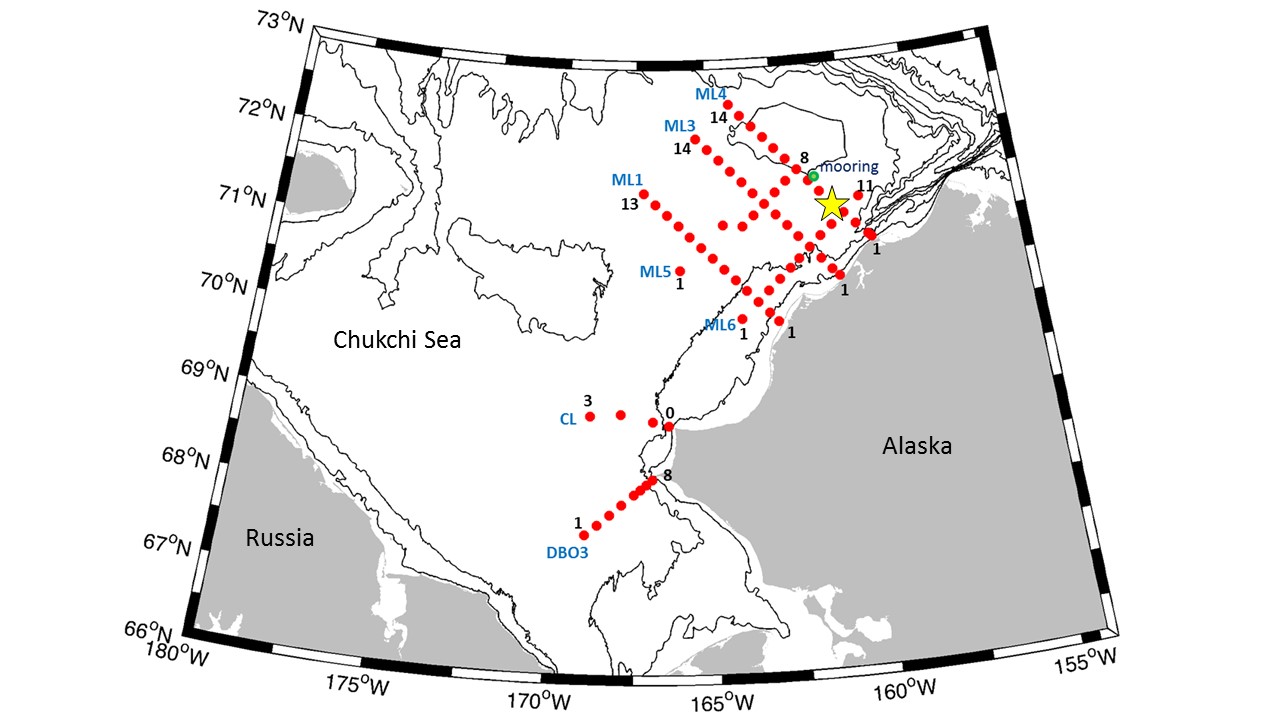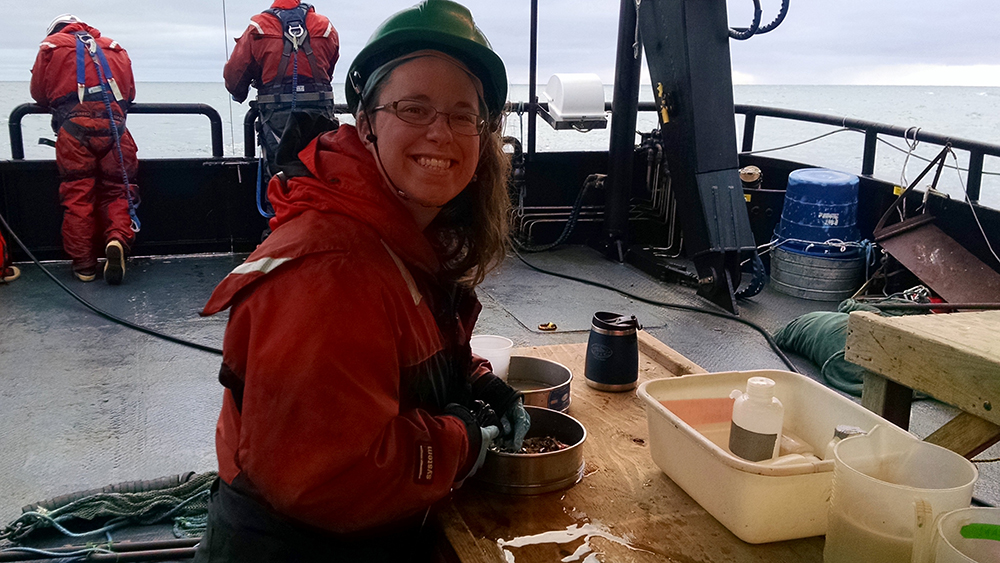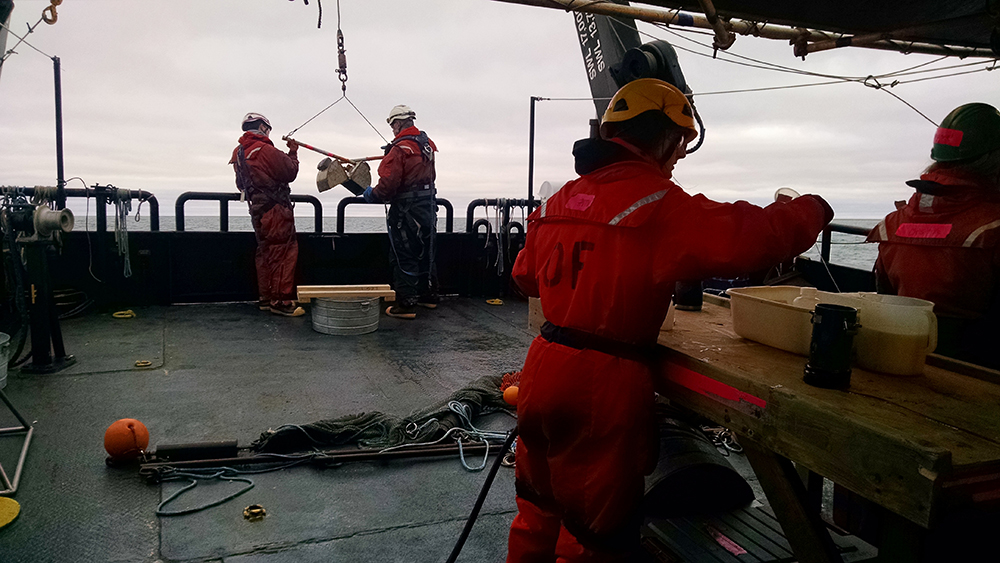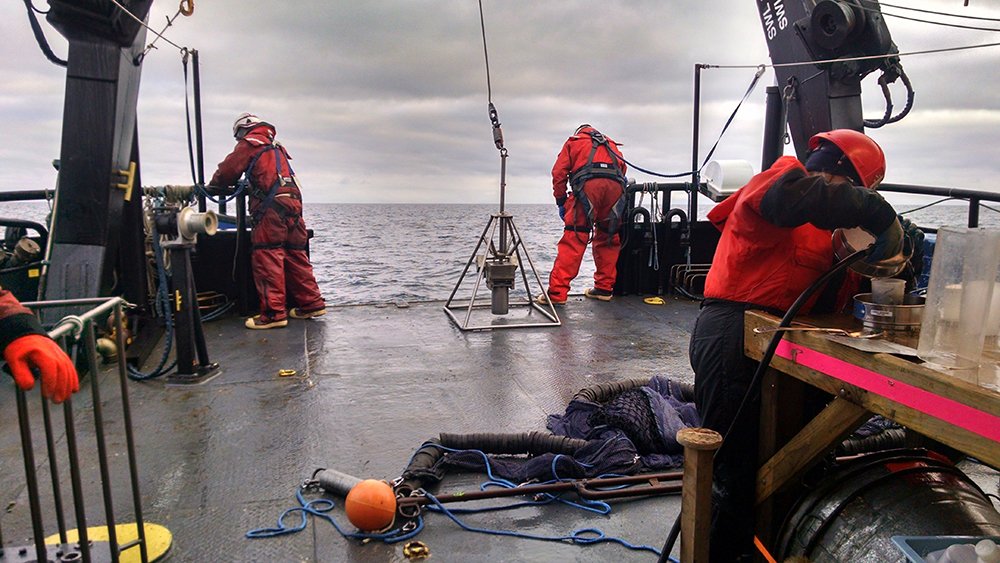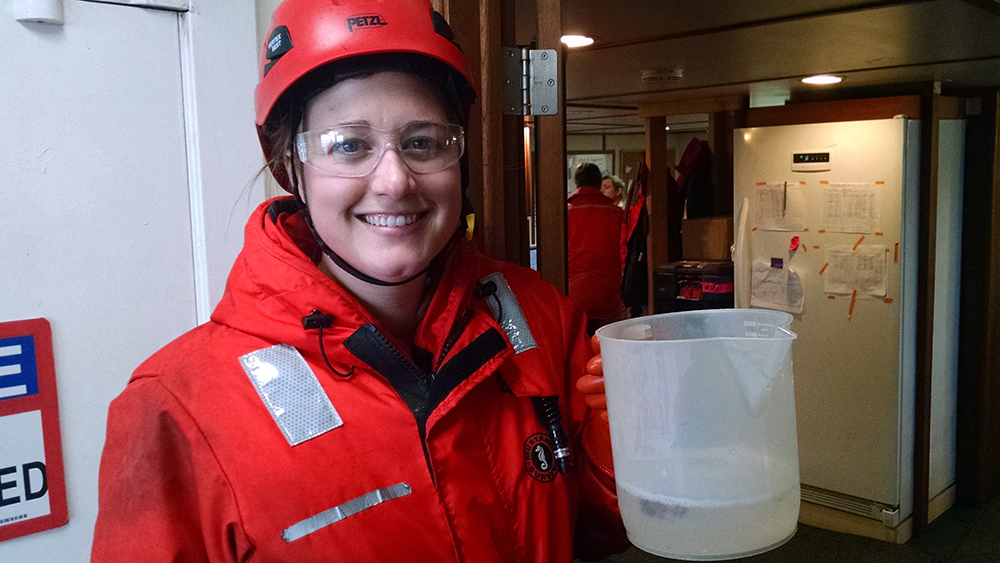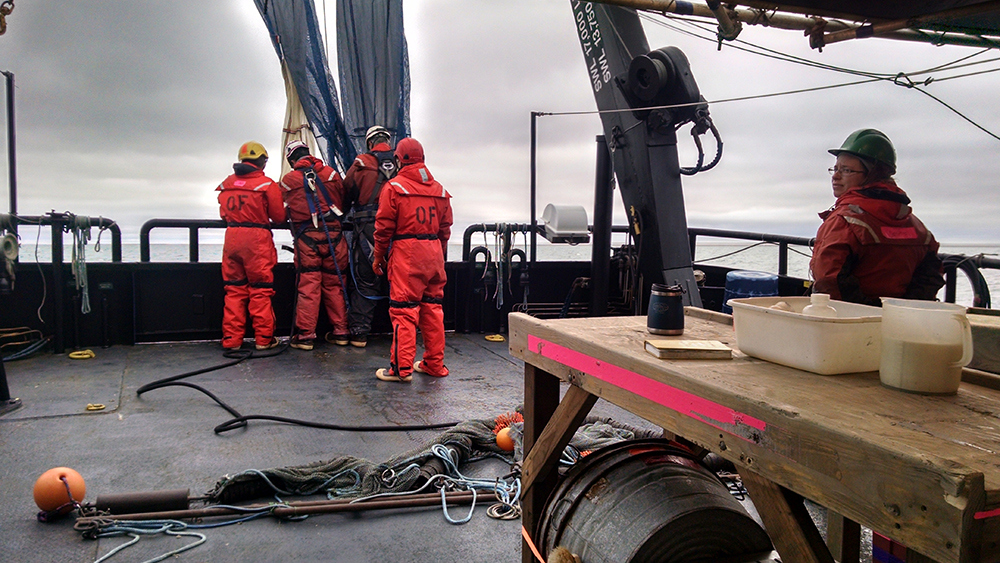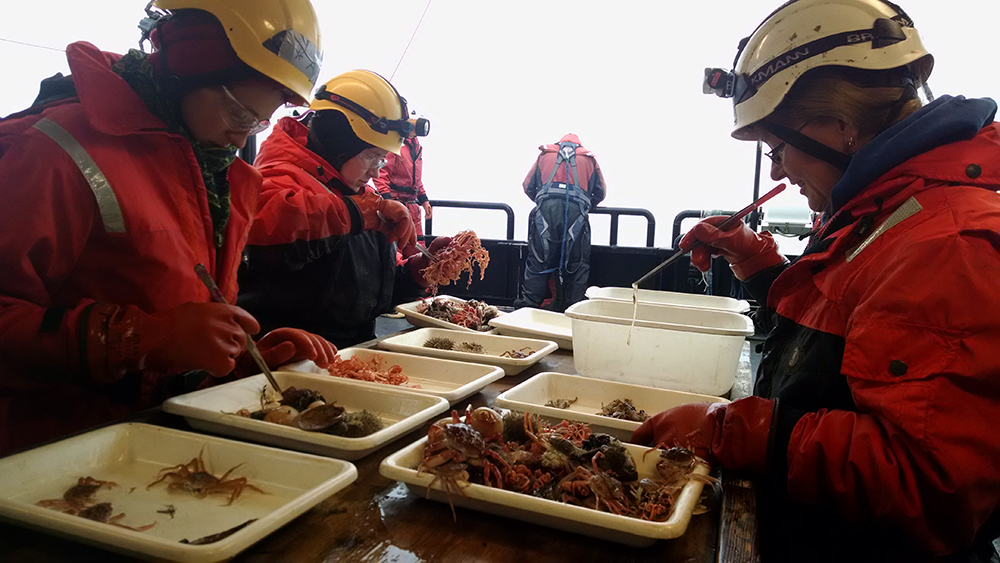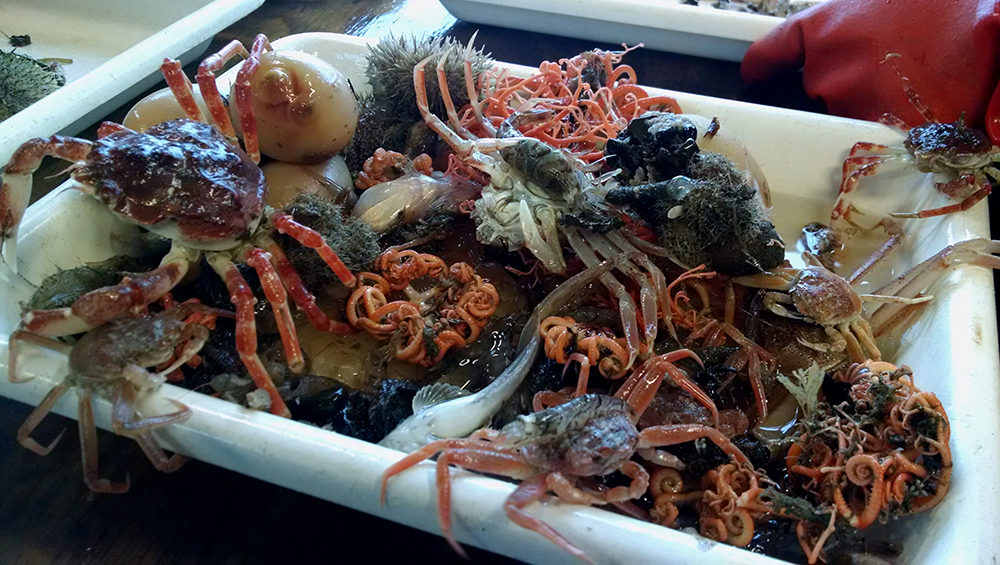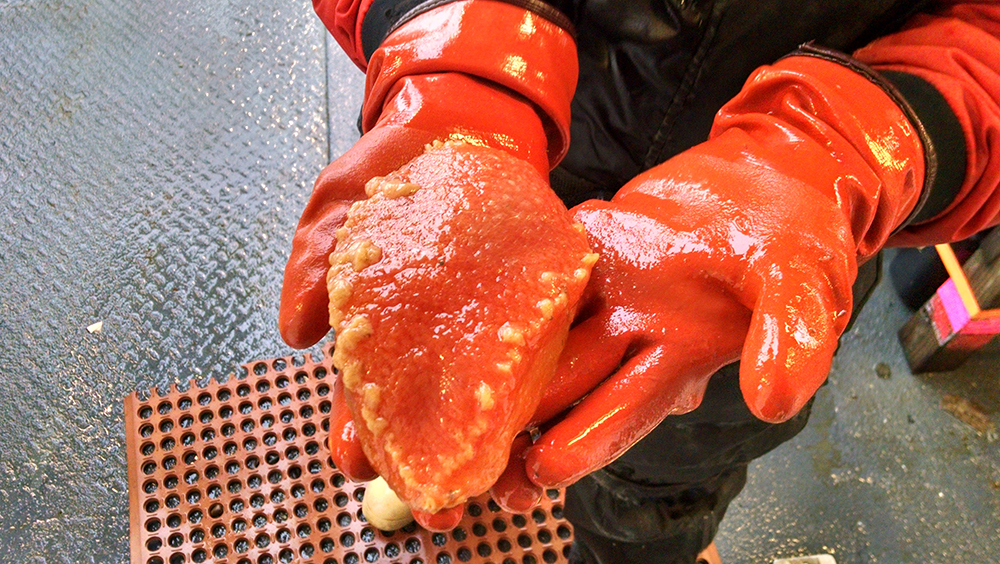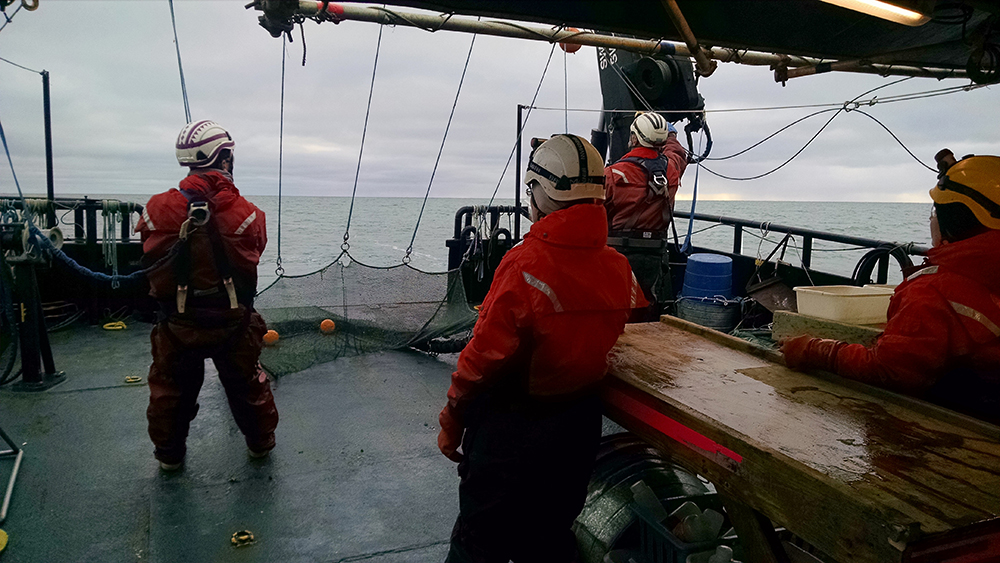While the seabird and marine mammal observers sleep at night, other scientists are afoot. At every sample station (red dots on the map), they are on deck deploying gear to collect physical, chemical, and biological samples.
The first thing to go into the water at a station is the CTD, which measures water quality from the surface to the bottom, and takes water samples at certain depths. These water samples are for chlorophyll a, nutrients, microbes, phytoplankton, and stable isotopes.
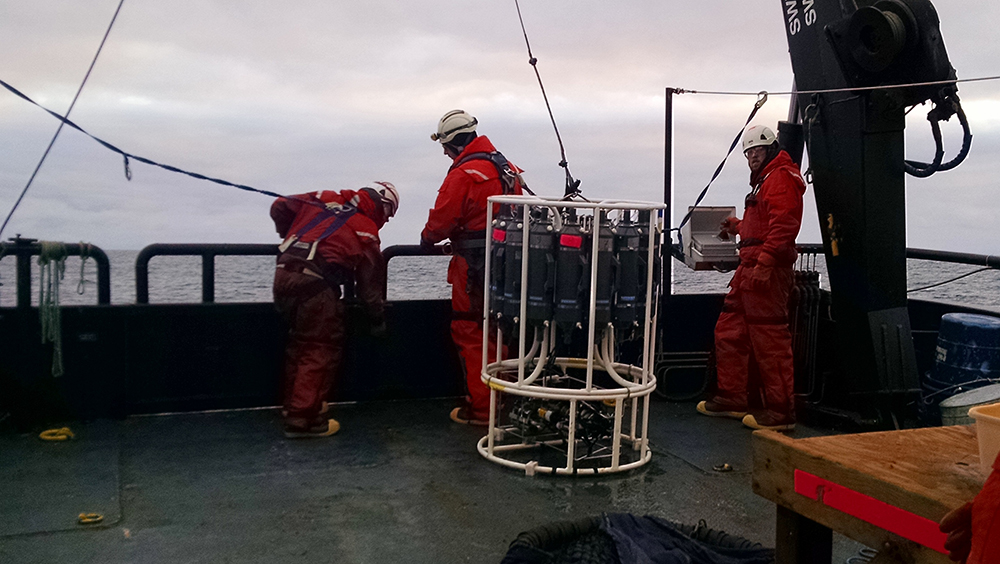
CTD on deck after being retrieved
After the CTD, a vertical net is used to collect zooplankton from the bottom to the surface.
Then, a Van Veen grab collects a sample of sediments and infaunal invertebrates, which live in the sediments. Five grabs are taken at each station.
Christina Goethel and a sample from the Van-Veen grab
Van-Veen grab being prepared to put in the water
If the bottom isn’t too rocky, two HAPS cores are taken of the sediments that will be used for stable isotope analyses and genetic analyses of meiofauna, which are small invertebrates that live in the sediments.
Preparing to put the HAPS corer into the water
Zooplankton are sampled again using an oblique Bongo tow, which is hauled obliquely through the water column as the ship moves forward slowly.
Caitlin Smoot and a zooplankton sample
A bottom trawl collects demersal fish and invertebrates, which live on or close to the sea floor.
Vertical net being retrieved
Sorting through a bottom trawl catch
Sample from a bottom trawl
A nudibranch from a bottom trawl catch!
Bottom trawl getting hauled back
At every other station, a midwater trawl collects pelagic fish, which live in the water column.
When as a sample has been retrieved, the scientists get busy processing it. Processing samples can take the entire time in between stations, and a few more hours after all the night’s stations are finished. Everyone in both the science crew and the boat’s crew has a specific job, which helps keep everything running smoothly.

